Budweiser Red Light
Brand Content (SILVER)
Long Term Success (GOLD)
Client Credits: Labatt Brewing Company Ltd.
Labatt Brewing Company Ltd.
Kyle Norrington, VP Marketing
Andrew Oosterhuis, Brand Director
Mike D’Agostini, Sr. Brand Manager
John Patrito, Brand Manager
Lindsay Olimer, Trade Activation Manager
Jorn Socquet, VP Marketing
Agency Credits: Anomaly
Anomaly
Pete Breton, Executive Creative Director
Dave Douglass, Executive Creative Director
Jamie Marcovitch, Associate Creative Director/Copywriter
Todd Cornelius, Associate Creative DirectorArt Director
Craig McIntosh, Associate Creative Director/Copywriter
Jaimes Zentil, Associate Creative Director/Art Director
Neil Blewett – Associate Creative Director
Brendan Scullion + Jesse Hortstein-Goldberg + Taylor Twist, Copywriters
Mike Byrne, Chief Creative Officer
Andy Slater, Designer
Candace Borland, Managing Director
Dion Aralihalli, Managing Director
Matt Holton, Account Director
Brent Rivard, Executive Business Director
Keltie White, Account Supervisor
Allison Cornford, Account Supervisor
Vanessa Cote, Account Coordinator
Paul Lipson, Director of Communications Strategy
Thomas Gaylor, Account Supervisor
Chris Campaner, Social Manager
Leanne McLellan, Head of Production
Jen Mete + Dwight Phipps, Producers
Rob Murray, Print Producer
Print Production: 7thfl
Product Design: Buzz Products
Public Relations: Veritas Communications
Experiential: Mosaic Canada
Media Placement: UM Canada
Trade Activation: Hunter Straker
Post Production: School Editing, Rooster, Alter Ego
Section I — CASE PARAMETERS
| Business Results Period (Consecutive Months): | 47 months (2013-2016) |
| Start of Advertising/Communication Effort: | Feb 2013 |
| Base Period as a Benchmark: | vs 2012 |
| Geographic Area: | National |
| Budget for this effort: | $1 – $2 million |
Section IA — CASE OVERVIEW
Why should this case win in the category (ies) you have entered?
In the very competitive category of beer, every edge can make or break a brand’s fortune. Hockey is one of the biggest drinking occasions and when Budweiser was faced with the loss of the NHL sponsorship to its biggest competitor, Molson, we were forced into a position to change the game, literally.
We chose to think like a fan and not a sponsor, and through this approach Budweiser was able to uncover a tremendous white space and idea that would change the way Canadians experience hockey forever. The Budweiser Red Light was a powerful and singular symbol of the best moments in hockey: the goals.
The first of its kind tech innovation has continued to illuminate living rooms and bars across the country, but the idea wasn’t one that would just help us get through a single hockey season, becoming instead a game-changing idea that shifted the brand’s fortune long term. As long as we were elevating goals, the idea could continue to resonate across all of Canada’s greatest hockey moments both on a local stage and also an international stage.
The Budweiser Red Light has manifested in many forms, including a Zeppelin, helmets, glasses, holiday lights and even goal-synced advertising. All have collectively made Budweiser the #1 brand in Canada and the Red Light products have come to live in 1.6 million homes nationwide over the course of the past five years.
This case demonstrates under an incredible amount of competitive pressure a bigger, brighter idea that surfaced for Budweiser, strengthening its stronghold as the #1 beer brand in Canada. The idea continues to build a long-term platform for the brand and elevates the best hockey moments for Canadians across the country.
Section II — THE CLIENT’s BUSINESS ISSUES/OPPORTUNITIES
a) Describe the Client’s business, competition and relevant history:
“A good hockey player plays where the puck is. A great hockey player plays where the puck is going to be” – Wayne Gretzky
Hockey is in the hearts of all Canadians and is also critical to winning in the very competitive beer category. For Budweiser to remain the number one beer brand in Canada, we had to win in hockey against our biggest rival, Molson Canadian.
In 2011, the NHL announced it had entered into a sponsorship agreement with Molson and would not be renewing its contract with Budweiser. As hockey represents the biggest volume-driving occasion, this was a massive setback for the brand. Adding to this problem was the lack of Budweiser’s association to hockey. Since Molson acquired the official NHL sponsorship in 2011, Budweiser’s consideration and consumption was affected and the brand had already been fighting an uphill battle, given that Molson was engrained in Canada’s culture after decades of hockey advertising. The core beer category was also in continuous decline due to craft beer options, so Budweiser had to rethink its overall hockey strategy and create a new way of connecting with consumers to insulate from the category decline. We didn’t need just another ad campaign; we needed an idea that was far bigger and brighter.
b) Describe the Client’s Business Issues/Opportunities to be addressed by the campaign:
The absence of a major hockey sponsorship, let alone to see it go to our biggest competitor, was going to create a tremendous amount of pressure for Budweiser to drive volume during this major beer drinking occasion. Without a strong association to hockey, Budweiser’s connection to a major Canadian passion would continue to erode.
The limitations made us think about how we could behave differently. We concluded that traditional sponsorships were fleeting and superficial. Their focus on signage and the business of sports encouraged us to reframe the challenge to solve. To play a meaningful role in hockey we tasked ourselves to behave as hockey’s biggest fan – not compete in a sponsorship war. We needed to focus on amplifying game days across the nation, all season long, to create a lasting legacy.
With the right idea Budweiser could carve a unique space, reinvent the way Canadians experience the game they love, and do it all in spite of the absence of a national sponsorship.
c) Resulting Business Objectives: Include how these will be measured:
As we continued to focus on increasing brand preference and consumption through association with hockey, we needed to ensure we had an idea that could build through the years and not rely on hit-and-miss one-offs annually. Our idea had to build appeal and familiarity for the long run.
Our campaign commenced in February 2012 and was continually refreshed with each progressive hockey season and major international hockey events without breaking away from its original idea.
5-year high level core business objective:
- Hold share and volume for Budweiser
5-Year Core communication objectives:
- Increase Budweiser “association to hockey”
- Increase brand affinity
- Drive earned impression to compete with Molson Canadian.
Budweiser is not an official sponsor of the NHL™ or any other hockey league, the World Cup of Hockey, or any participating hockey federations. This campaign is not licensed by, sponsored by, or otherwise associated with the National Hockey League™, any other hockey league, or any of their respective member teams.
Section III — YOUR STRATEGIC THINKING
a) What new learnings/insights did you uncover?
“We know that hockey is where we live, where we can best meet and overcome pain and wrong and death. Life is just a place where we spend time between games.” —Fred “The Fog” Shero
Molson, Budweiser’s biggest competitor, was very much present in hockey nationwide due to its strong connection to Canadian heritage and its new NHL sponsorship. As such, Budweiser had a major challenge to break through and drive relevancy with Canadian hockey fans on a national level.
While we didn’t have the sponsorship, we recognized that for Canadians the culture of hockey is far more important than the business of hockey. Our strategy of elevating game time for everyday hockey fans was the right approach to winning in the hockey space. We would continue to ask ourselves, as hockey’s biggest fans, what we could do with Budweiser’s resources to make the best game in the world even better for fans. Two major “aha!” moments helped us answer this question and take our current strategy to new heights by identifying an ownable platform built around goals that could live on long term.
1) THE BUSINESS OF HOCKEY WAS OVERSHADOWING THE LOVE OF HOCKEY
Hockey lockouts and enormous ticket prices were making games inaccessible. In fact, we found that over 70% of Canadian men 19–34 had never been to a professional hockey game despite claiming they enjoyed hockey. Traditional sponsorships could be important, but access to logos and sponsorship language doesn’t truly capture Canadians’ love for the game. It’s the sense of community, anticipation and excitement of what the game brings that wins over hockey fans across the country. This was very much in line with the values of Budweiser as anticipation, celebration and camaraderie are at the core of its values. We recognized that the most exciting moment in hockey is the goal. If executed correctly we could associate ourselves with the greatest moment in the game, when fans’ emotions are at their peak. Over time, Budweiser could be part of Canadians’ greatest hockey memories at home.
2) NO BRAND FOCUSED ON GOALS
After identifying our aspirations to be associated with goals, we recognized that while traditional sponsorships have access to logos and imagery, they didn’t have ownership of an in-game moment like scoring. Taking a look at the developing mobile and social media landscape, we realized that many media outlets had applications you could download to your phone to receive scoring updates. The challenge was to connect our brand to an in-game moment, and to the growing connectivity available to update people in real time on the status of their favourite team. This was an enormous discovery as it meant we had the ability to be connected to goals.
With these insights in mind, we again asked ourselves what we could do to make the best moment in hockey even better. The answer was bringing fans closer to the goal-scoring moment with the Budweiser Red Light, a game-synched goal light that goes off every time their favourite city scores. We essentially brought the arena experience and the epicentre of goal celebrations into Canadian homes.
b) What was your Big Idea?
Elevate the greatest moment in hockey for Canadians – The Budweiser Red Light.
c) How did your Communication strategy evolve?
“Hockey captures the essence of Canadian experience in the New World. In a land so inescapably and inhospitably cold, hockey is the chance of life, and an affirmation that despite the deathly chill of winter we are alive.” – Stephen Leacock
Budweiser historically has been about celebration and anticipating great times. With that in mind, we wanted to create something tangible for our core target: hockey-loving males aged 19 to 34. But it also needed to be meaningful for all fans, not just the fortunate few who got a seat in the arena. Millions of fans gather with friends at their favourite bars and at homes to watch the game. These fans deserved to have their game amplified and their celebration taken to a whole new level.
To create ongoing relevancy for Canadian fans, we had to create a new experience.
There is no other sport in the world that has a single recognizable symbol and sound that goes off when scoring occurs. Over the years, the red goal light in hockey had become not just a trigger, but also a beacon of great times and great memories. This was our big opportunity. To identify the best way to bring it to life and stay on the strategy of elevating game time, we couldn’t just simply associate ourselves with goals: we had to find a way to make goals even better. We decided to bring goals closer to the fans and elevate the experience whenever they were scored.
Leveraging IMP technology, a technology that had never been used in a consumer product, Budweiser created a physical, game-synched hockey goal light that goes off every time a fan’s favourite team scores.
Strategically, it made perfect sense: Budweiser is celebration and optimism in a bottle; similarly, the goal light in hockey is celebration and optimism in a flash, a powerful symbol of elation underlying Canada’s national pastime. It also represents teamwork and camaraderie – values that Budweiser shared.
d) How did you anticipate the communication would achieve the Business Objectives?
The uniqueness of the idea meant beyond the advertising the communication itself was the physical Budweiser Red Light. We were confident the communication would resonate, as each Canadian would create their own personal connection and memories with the light based on which team they cheered for and where they watched the game. Our decision to not focus on the game in general but on the most important moment of the game ensured we would separate ourselves from our competitors and connect with fans on the game’s biggest emotional moment. This would accelerate our ability to achieve the key objective of increasing our association to hockey in the absence of the NHL sponsorship.
Budweiser is not an official sponsor of the NHL™ or any other hockey league, the World Cup of Hockey, or any participating hockey federations. This campaign is not licensed by, sponsored by, or otherwise associated with the National Hockey League™, any other hockey league, or any of their respective member teams.
Section IV — THE WORK
a) How, where and when did you execute it?
The initial Red Light launch required a big stage to drive visibility and interest, so we chose the Super Bowl as the ideal stage to announce our innovation. The effort achieved major recognition with talk value, so each year that followed we continued to announce the new chapter in our story on the Super Bowl.
Our effort to elevate goals had to go beyond our tech innovation and advertising but still had to be part of the goal moment as fans watched the game. With this in mind we sponsored Hockey Night in Canada, the most viewed weekly hockey program in Canada on CBC. With the help of our media partners and the CBC we were able to customize a sponsorship package that had the Budweiser Red Light appear when one of the respective teams scored. We created our own “Budweiser Goal Channel” to get all the latest scoring updates, another detail that strengthened our association to goals and hockey.
The Red Light itself is a first of its kind. Using a WIFI connection and the Budweiser Red Lights App, fans select their city (or cities) and follow the simple instructions to connect their physical red light to their favourite team. Fans will never miss a goal again and can rest assured they’ll know when their team has scored: the Budweiser Red Light flashes and a horn sounds. There’s also a “five minutes to game time” warning message.
The light is made from aluminum and plastic, featuring an authentic goal light look and feel. Each light is available for $159 plus taxes and shipping. The idea was so big we continued to manifest it in new ways annually, building further familiarity and equity for the brand:
2012–2016 Budweiser Red Light
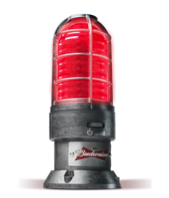
2014 Budweiser Red Zeppelin
A 70-foot-long blimp, with thousands of LED lights triggered to go off when Canada scored during an international tournament. Given Canadians join together celebrating for one team, it meant bigger goals required bigger celebrations.
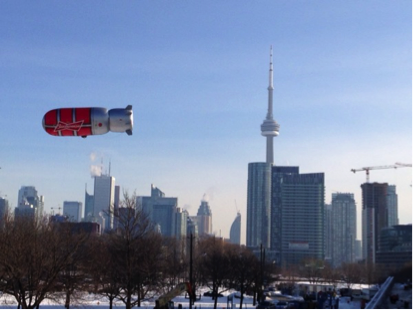
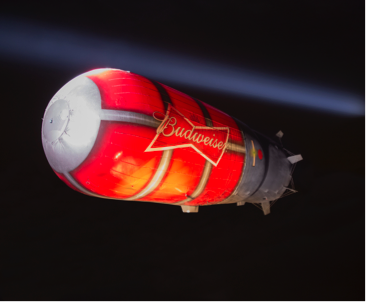
2015 – Budweiser celebrated the birthplace of goals
In the small town of Saint Jerome Quebec is the puck factory that produces all the hockey pucks for professional hockey. Budweiser surprised the workers of the factory by taking them to a game so they can see goals being scored live.
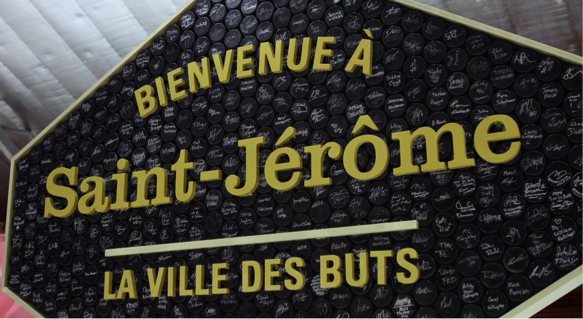
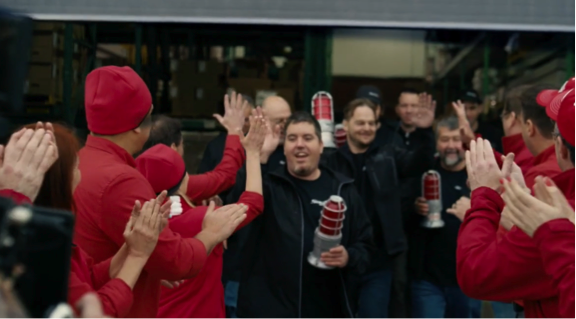
2016 Budweiser Red Light Glasses
Free in every case were goal-synced glasses. Over five-hundred-thousand glasses were distributed. This was a great evolution as we directly tied our product to the goal moment in a natural way as fans typically cheers their Budweiser with friends when their team scores.
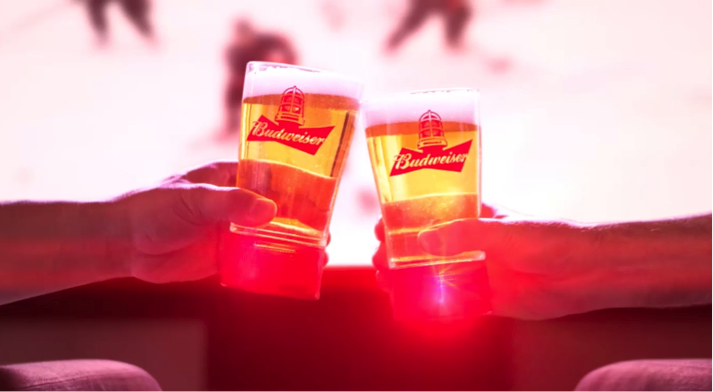
2016 Canada’s Goal Light
We created a giant red light and placed it on the top of the world in in the northern most part of Canada and triggered to go off for Canadian goals.
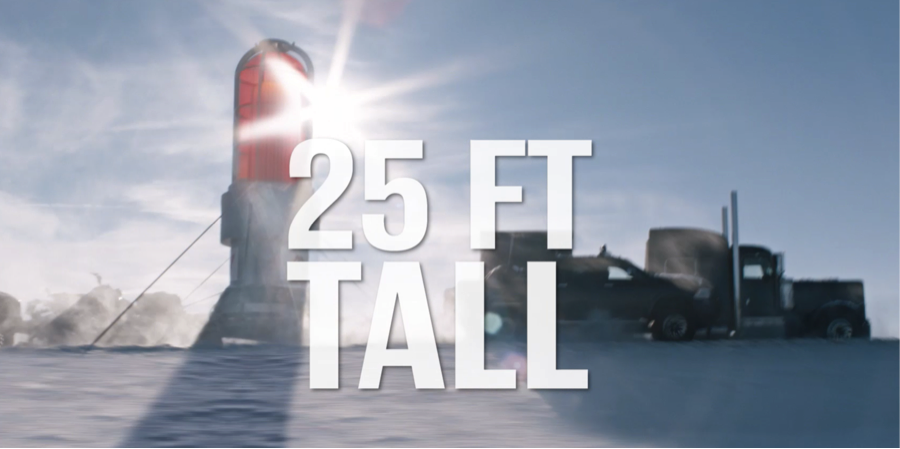
By the end of 2017 there should be close to 1.6 million Budweiser Red Light device in homes and bars elevating the goal moment across the country.
Our objective was to get as close to the goal moment as possible, and beyond our Red Light innovations we associated ourselves with the broadcast and the personalities. Even our advertising was synched to goals.
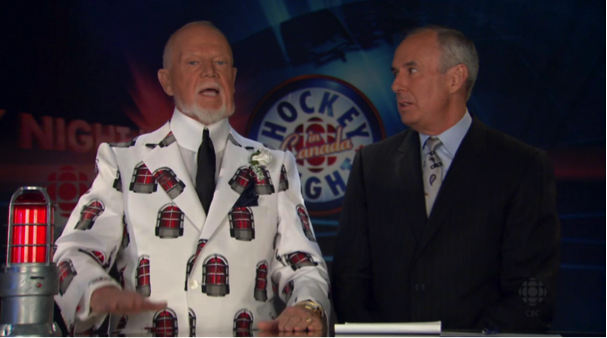
Don Cherry wore a custom Budweiser Red Light suit to celebrate the idea.
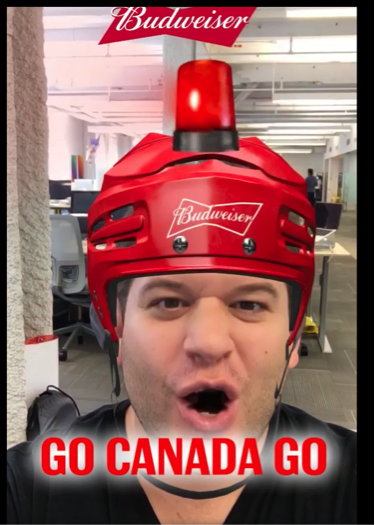
Over 500,000 Canadians used the Red Light Snapchat filter to express their enthusiasm.
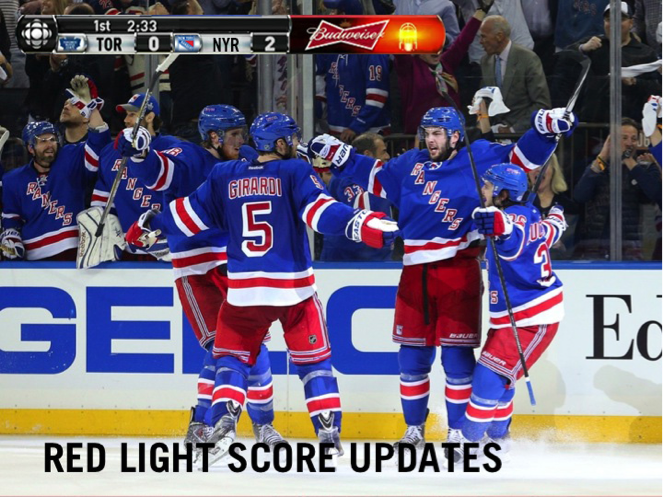
Broadcast integration, connecting Budweiser to the goal moment as it happens.
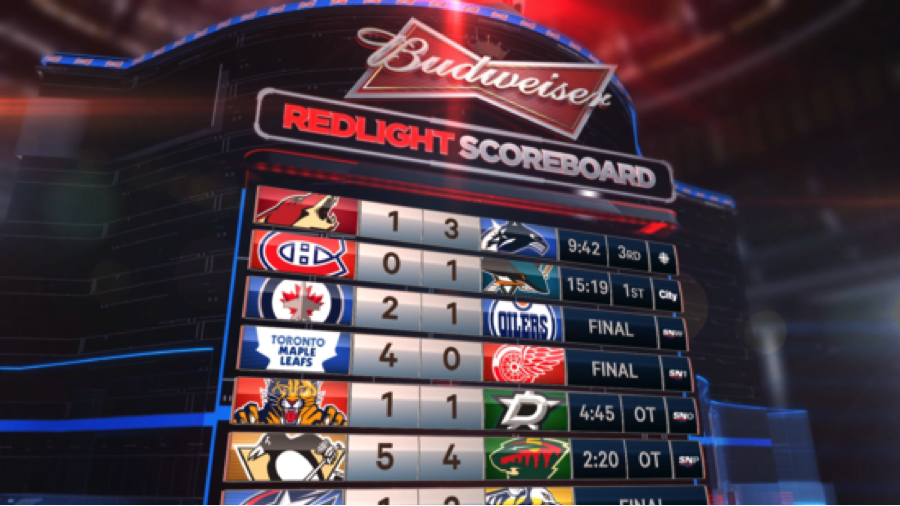
Broadcast integration for score updates.
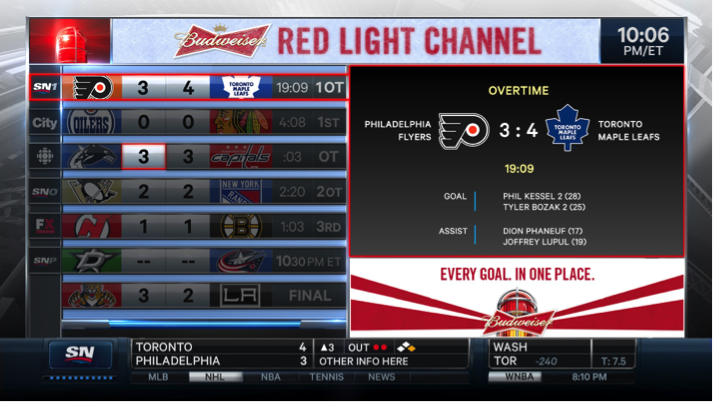
Budweiser had its own Red Light channel to highlight when goals were scored.
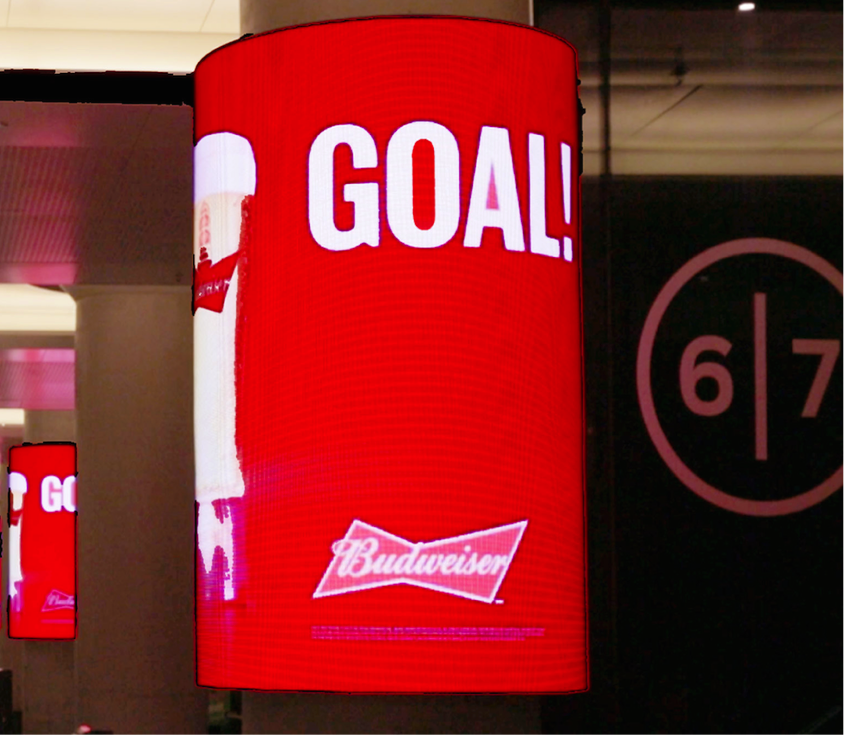
Goal-synced OOH to never miss a goal anywhere.
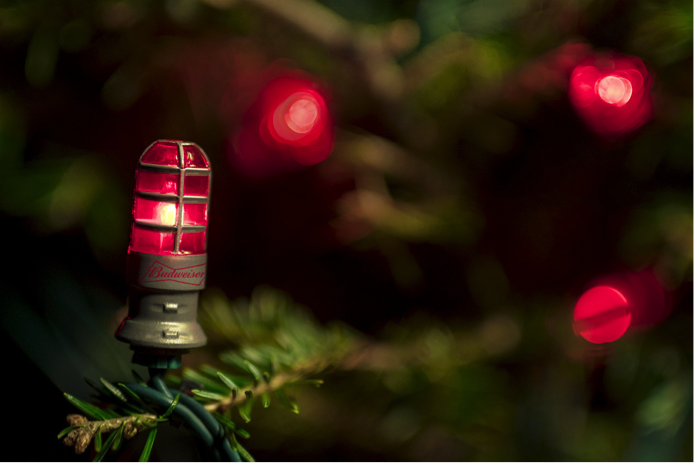
Seasonal edition of the Budweiser Red Light was also available for fans.
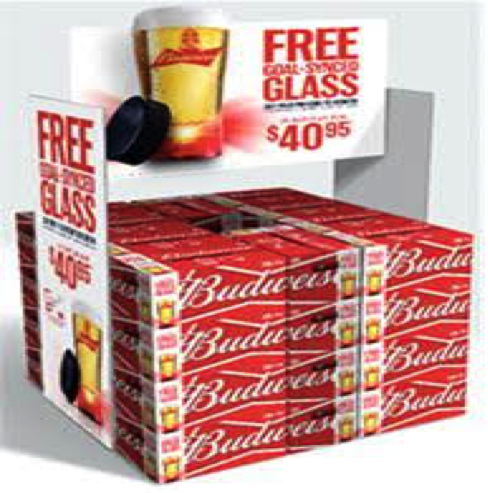
The Budweiser Red Light was integrated in trade.
c) Media Plan Summary
The chart below summarizes the last 5 years of media for Budweiser hockey programs. One item to note is there is a significant increase in GRPs in 2016 versus all other years due to a major international hockey tournament happening the same year; as a result, multiple Red Light programs were active and required incremental support.
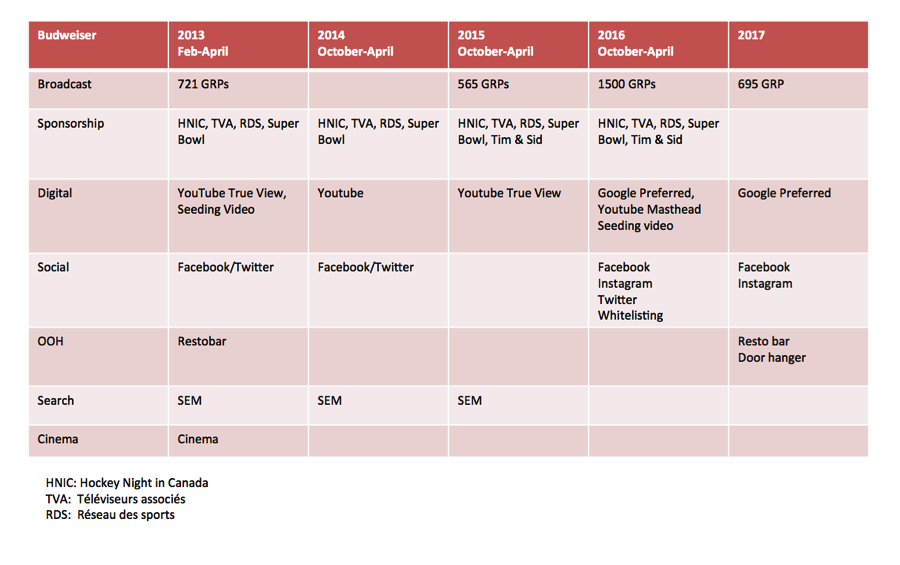
Budweiser is not an official sponsor of the NHL™ or any other hockey league, the World Cup of Hockey, or any participating hockey federations. This campaign is not licensed by, sponsored by, or otherwise associated with the National Hockey League™, any other hockey league, or any of their respective member teams.
Section V — THE RESULTS
a) How did the work impact attitudes and behaviour?
5 Year Core communication objectives:
- Increase Budweiser “association to hockey”
- Increase brand affinity
- Drive earned impression to compete with Molson Canadian. ACHIEVED: All the above objectives were achieved as Budweiser grew vs their competitors in association to hockey and brand affinity while generating millions of earned impressions year over year.
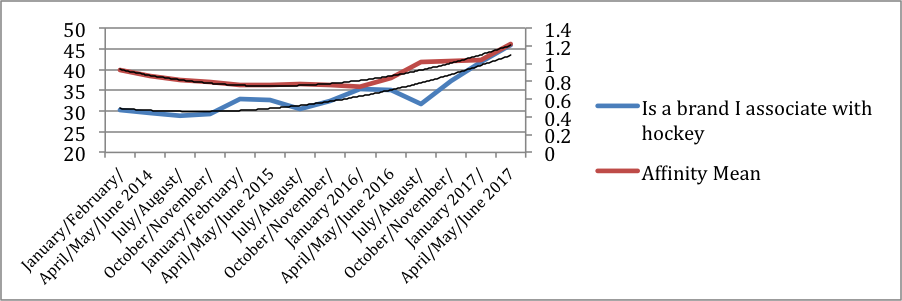

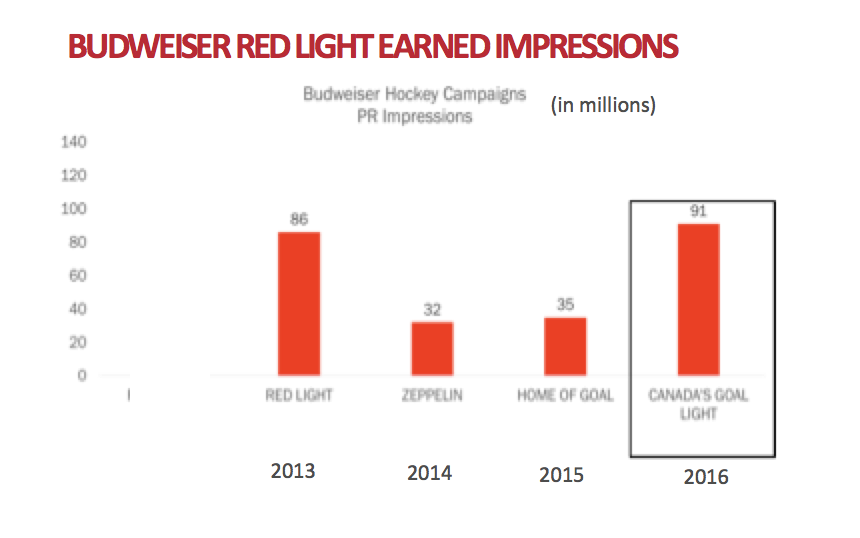
b) What Business Results did the work achieve for the client?
5 year high level core business objective:
- Hold share and volume for Budweiser
ACHIEVED: Budweiser widened it’s gap vs its immediate competitors
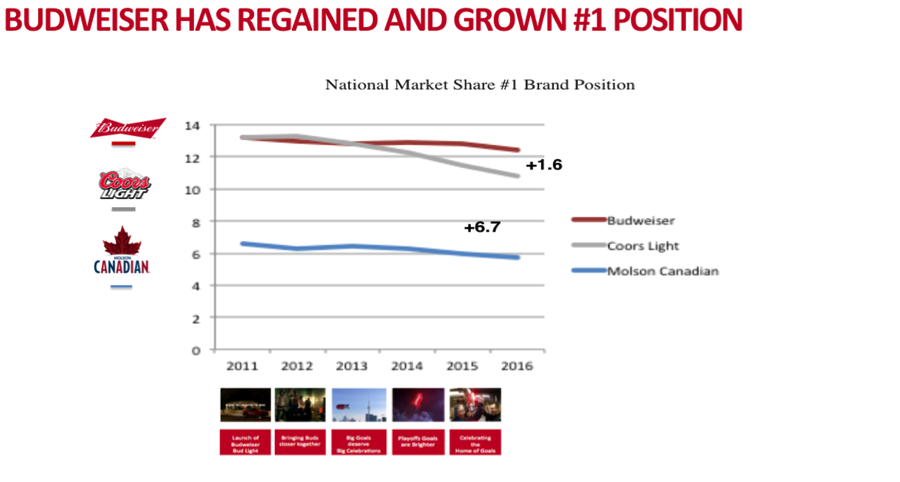
c) Other Pertinent Results
In the last five years, Budweiser has generated over $10Million in sales from Red Light devices, in which proceeds were then re-allocated back to the Budweiser advertising and marketing budget.
Additionally, because each Budweiser Red Light required a download of the Budweiser Red Light app to operate, we created a CRM program that allowed us to connect to millions of consumers and keep them engaged with the latest Budweiser hockey activation and programs.
Despite the simplicity of the Red Light idea, its evolution over the course of five years continued to stay fresh and deliver earned media for the brand. In five years the Budweiser Red Light program has garnered over 250MM earned impressions, an incredible feat that proves the power of a big idea can continue to be timeless.
d) What was the campaign’s Return on Investment?
Utilizing Nielsen’s Marketing Mix Model, which tracks and indexes the ROI for campaign-specific media spend, Light Up the Nation beat both the ABI NA benchmark ROI and global benchmark by .41 and .42, respectfully.
Budweiser is not an official sponsor of the NHL™ or any other hockey league, the World Cup of Hockey, or any participating hockey federations. This campaign is not licensed by, sponsored by, or otherwise associated with the National Hockey League™, any other hockey league, or any of their respective member teams.
Section VI — Proof of Campaign Effectiveness
a) Illustrate the direct cause and effect between the campaign and the results
While in the beer category there are variables, such as regional pricing, that can affect sales results, we are confident in saying that there was a strong relationship between our marketing activity and results.
Budweiser experienced a record in brand consideration and weekly consumption when there was no other major marketing activity beyond the Budweiser Red Light programs occurring. The program received more than 250 million earned media impressions telling the Budweiser Red Light story across Canada and beyond.
The light itself garnered praise from former Apple Chief Evangelist Officer Guy Kawasaki, who described it as “the best marketing idea ever.” Media were eager to pick up the story. The Toronto Star featured the light on the front page of the sports section. Wired magazine and Contagious also praised the idea.
The story created such inspiration throughout Canada that one college student triggered a North American groundswell of support when he started a petition for the CN Tower in Toronto to light up every time Toronto scored in the playoffs. He claimed the inspiration for the idea came from the Budweiser Red Light. Likewise, an iconic skyscraper in Pittsburgh was also lit up red every time their city scored during the playoffs.
Roberto Luongo, a popular NHL goaltender, poked fun at himself after letting in multiple goals in a game and apologized for burning out everyone’s Budweiser Red Lights, a clear indication that the Red Light had hit mainstream status in conversation.
Greater than any one business objective, however, is seeing the inspiration others have had as a result of the Budweiser Red Light. This case is an example of a brand truly behaving like a fan vs. just talking to one and seeing its benefits long term.
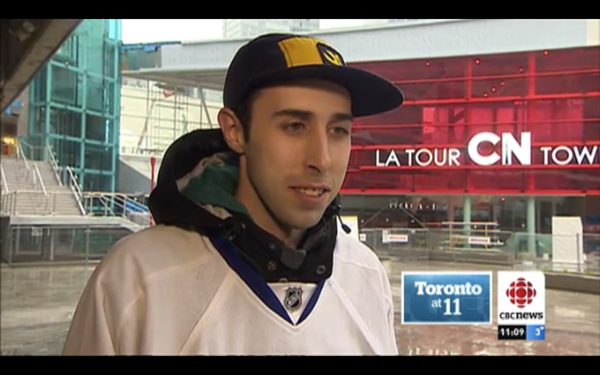
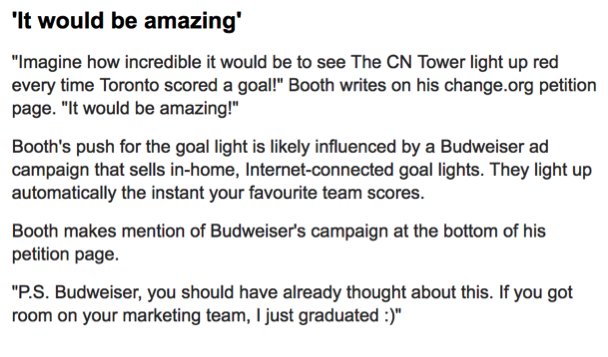
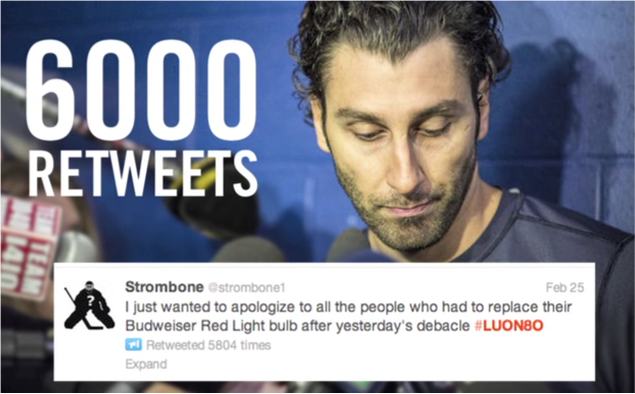
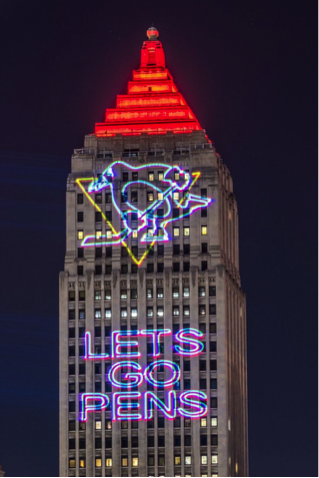
b) Prove the results were not driven by other factors
Campaign spend vs. history and competition:
The chart below summarizes the last 5 years of media for Budweiser hockey programs. One item to note is there is a significant increase in GRPs in 2016 versus all other years due to a major international hockey tournament happening the same year; as a result, multiple Red Light TV spots were active and required incremental support, however individually their budgets remained flat to last year.

Pre-existing Brand momentum:
NA
Pricing:
While in the beer category there are variables, such as regional pricing, that can affect sales results, we are confident in saying that there was a strong relationship between our marketing activity and results. There were no major pricing changes or discounts during this campaign.
Changes in Distribution/Availability:
There were no drastic changes in distribution/availability of Budweiser during this campaign.
Unusual Promotional Activity:
There were no drastic changes in promotional activity. Budweiser and competitors frequently provide national in-case promotional items throughout the year. The maximum value of these in-case promotional items is controlled and standardized for all brands by the provincial regulatory boards.
Any other factors:
N/A
Budweiser is not an official sponsor of the NHL™ or any other hockey league, the World Cup of Hockey, or any participating hockey federations. This campaign is not licensed by, sponsored by, or otherwise associated with the National Hockey League™, any other hockey league, or any of their respective member teams.